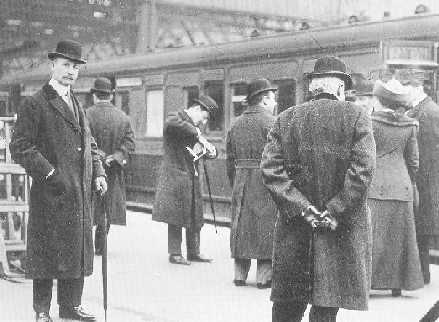News from the Front: The Stodgy East vs. the Dynamic West
News from the Front: The Stodgy East vs. the Dynamic West


I returned from Europe this past weekend, so I successfully avoided the mainstream news reporting on indictments, government shut-downs, political polling, and impending weather disasters.
My only burden was to oversee WPTF’s response to CAISO’s filing at FERC on its proposed Extended Day-Ahead Market (EDAM) and the linked Day-Ahead Market Enhancement (DAME). That was enough. I was nine hours ahead of the West Coast and trying to figure out how to get agreement on a technical document for filing on the East Coast (six hours behind). Thank goodness for robust Italian wines.
But the news coming out of the West has been so fast that there hasn’t been time to consider where we are. A friend of mine asked why I hadn’t put out a blog in a while… The meetings – both virtual and in person – have been moving so quickly that there’s been little time for reflection. So, perhaps it’s time to consider where we are.
Day-Ahead vs. RTO: The West is now fully committed to some kind of market integration. For some, this is merely a matter of better utilizing the existing transmission system to meet reliability more efficiently. For others, this helps facilitate the energy transition. Both are better accomplished with something equivalent to a network dispatch. I gave up hoping the West would move right into an RTO by the sheer preponderance of utilities and other stakeholders who seem to want to take this “interim” step, even though it would make many things simpler (single tariff, known rules).
Both CAISO’s EDAM and SPP’s Market+ day-ahead market offer promise to get close to a network dispatch once all the exceptions to each member utility’s Open Access Transmission Tariff (OATT) have been taken into consideration. The discussions give me hope that either of these day-ahead offerings (EDAM or Markets+) will lead to something that looks like the full utilization of the transmission system through a network dispatch. We shall see if that materializes and, if it does, then perhaps the training wheels can come off the market integration and we can move to a single tariff-based dispatch.
Timing of the market development: CAISO filed its EDAM at FERC on August 22 with an anticipated market start in 2025. SPP’s Markets+ has a later start, but SPP has accelerated its planned tariff filing at FERC to first quarter of 2024 for a “go live” in 2026. The sense of urgency is not just driven by considerations of growing the biggest market platform – although that often seems to be a factor – but rather the fact that the West needs this to best meet its needs.
It is no secret that the West is the most resource constrained region in the U.S. Large thermal assets have retired for economic and environmental reasons. Hydro has been less predictable in all the basins in the West. Add economic growth, increased electrification, the variability of renewable resources and the need to take advantage of dispatchability over a broad area of diverse weather and the need is apparent.
Much as I anticipate that FERC is favorably disposed to both these efforts at integrating what has been a highly fragmented market, there are possible impediments. First, while there appears to be a consensus to engage in a day-ahead market before venturing into an RTO, the arrangements of having a set of rules and tariff for such a market, while still respecting the OATTs of all member utilities, is complex. Further, at this point there is no requirement for any standardization of the OATTs or requirements that any change to the day-ahead rules be reflected in each utility’s (balancing area) OATT. This complexity may make FERC’s full approval on the initial filing challenging as staff and the Commission likely will wrestle with a structure they have never seen before.
Additionally, one of the historic challenges of integrating the West has to do with the varied business structures in the region. There are investor-owned utilities, public utility districts, federal power agencies, irrigation districts, tribal organizations, in addition to the third-party generators. Nearly 50% of customers in the WECC are not per se jurisdictional to either FERC or any state regulatory body. Many of these entities are relatively small and it takes time to absorb all the new terminology and products. A few examples:
- Convergence or “virtual” bidding is a recognized product in the RTO space that provides liquidity to the day-ahead market which helps make real-time markets less volatile.
- Market power mitigation is a function of every RTO and is designed as a protection from abuse, but which can be viewed suspiciously by owners of hydro resources which need to decide about when to flow water based on varied considerations.
- Congestion rent allocation between balancing areas which is different in a day-ahead market with balancing areas as opposed to nodal congestion.
All of this is to say that as consideration of key aspects of a proposed tariff for Markets+ move toward decision deadlines in the stakeholder driven SPP process (versus the more staff driven process of CAISO efforts), it is possible the ambitious timeline for filing at FERC may get pushed back.
One more time… Why not an RTO now, with a Western “twist”?
RTOs have been given a bad name back East, where – as far as I can tell – the fight appears to revolve around unhappiness with centralized capacity markets. The concept of capacity is well supported and even the level of capacity needed is not in question. It’s the pricing which is derived in a highly administrative construct. The West’s version of capacity is priced on a bilateral basis, which eliminates controversy within the RTO.
Are Western entities opposed to an RTO now because we’ve taken great strides to achieve a Resource Adequacy (RA) platform under the new Western Power Pool (WPP)? It shouldn’t be a problem to have an RTO dispatch its system in a way that respects WPP’s rules.
Is it because many utilities and regulators don’t want transmission planning to be done at an RTO? While transmission planning by any entity should consider the congestion revealed by a network dispatched market, it doesn’t follow that it must be done by the RTO. In fact, given the topology of the West – with its large areas of federal ownership and tribal considerations – the subscription model of transmission development may best suit our needs.
It’s gratifying that the West is driving hard towards an organic development of regional network markets. But challenges remain and the RTO with the “Western twist” seems a faster path to integration and full utilization of the grid.
I’ll now be quiet and continue to work on “day-ahead” markets… (sigh).